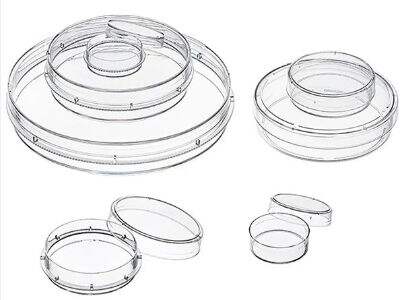Hello, friends! Have you heard of something called a centrifuge tube? It’s a little pipe that scientists use to fraction out slices of liquids. This allows them to examine these liquids more closely and better understand their composition. Here is a useful guide from Shengke if you need a few centrifuge tubes for your science experiments. This will be essentially everything you need to know in order to buy the best centrifuge tubes!
What to Look for When Buying
Buying centrifuge tubes requires consideration of a few essential things before making the final choice. You start by choosing the right material for your tubes. The materials can influence how your tubes perform in experiments. You’ll also want to think about how quickly the centrifuge can spin — this is referred to as RCF, which stands for relative centrifugal force. The RCF is the speed at which the centrifuge spins the tubes and that can vary how well the tubes do their job. Lastly, consider the shape of the tubes as well as the application's use for your experiments.
Choosing the Right Material
Centrifuge tubes are used for a variety of elements such as made of plastic, glass, and metal. Different 5ml pipettes materials have their pros and cons. For instance, plastic tubes work well because they are cheap and can simply be tossed in the trash once you are done using them. But they don’t work so well at high speeds, and they can shatter if the centrifuge spins too quickly. Glass tubes are stronger and can take those high speeds without shattering, but are also much more expensive. Finally, metal tubes are the most expensive of all, but they are also the strongest and can withstand higher speeds best. Shengke has a complete range of centrifuge tubes made from all styles of materials, to help you find the best option for your requirements.
This article will talk about RCF and capacity.
So now, let's discuss RCF and capacity a bit more. RCF, or relative centrifugal force, measures how fast the centrifuge rotates. A higher RCF indicates a faster spinning centrifuge. If a centrifuge tube has a certain RCF, the higher it can break, the greater the RCF is. This is very important, because too much spinning of the tube can break it and mess up your whole experiment!
Capacity is another key factor. Capacity indicates the volume the tube can accommodate. Different tubes can hold different amounts of liquid and you will want to ensure you have a tube which can hold sufficient liquid for your experiment. Shengke has a variety of centrifuge tubes available, with a range of maximum RCFs and capacities, so you’ll be able to find the one that suits your needs best.
Centrifuge Tubes In Various Shapes
Try not to get stressed because centrifugal models often have various shapes, and each of them will assist you in performing various tasks during the experiment! Ironically, there are conical tubes also, as well as round bottom tubes, and flat bottom tubes—and each has their own unique benefit. Conical 2 ml pipettes tubes are pointed on the bottom, making them great for solid-on-liquid separation. This is helpful when you want to view what is within your liquid or must gather solid particles from a mix.
These comprise cells or small particulates that will form a pellet at the base of a round bottom tube. Use this shape when you want to couple small parts and bring together in one place. Flat bottom tubes, however, have a flat base. Excellent for when you need to see how particles look under a microscope and get a clearer view of what is going on in your samples.
You may need one of this different shape if you study one of your experiments. For your convenience, Shengke carried the aforementioned shapes in their centrifuge tube collection, so you can choose the best tube type for your application.
Conclusion
Finally, remember these simple few points when purchasing pipette 10ml centrifuge tubes for your experiments. The first step depends on the right choice of material for the tubes. Secondly, also consider maximum RCF and tube capacity before you decide. Lastly, again think about the shape of the tube and how you will use this in your experiments. So there are variety kind of centrifuge tube from Shengke which has different meet the need of man facturing. So you are sure to find the perfect one for your needs. Happy experimenting, and here's to an awesome time learning about science!

 EN
EN
 AR
AR
 BG
BG
 HR
HR
 CS
CS
 DA
DA
 NL
NL
 FI
FI
 FR
FR
 DE
DE
 EL
EL
 HI
HI
 IT
IT
 JA
JA
 KO
KO
 NO
NO
 PL
PL
 PT
PT
 RO
RO
 RU
RU
 ES
ES
 SV
SV
 TL
TL
 IW
IW
 ID
ID
 SL
SL
 UK
UK
 VI
VI
 HU
HU
 TH
TH
 TR
TR
 AF
AF
 MS
MS
 GA
GA
 BE
BE
 IS
IS
 HY
HY
 LO
LO
 NE
NE
 MY
MY






